BACK TO WEATHER-BLOG MENU
New! Fine Art Prints & digital images for sale-
Welsh Weather & Dyfi Valley landscapes Slide-Library - Click HERE
So let's take a look at March 2014: springlike it indeed was and before the housing crisis erupted there were some fine days to enjoy and not a few storms too, these of the convective variety as opposed to the Atlantic-wide crammed-isobar bearing monster cyclones of January and February. I'll focus on two such outbreaks further down - following a bit of a celebration of a favourite and, I think under-rated local mountain, Plynlimon.
At 762 m (2468 ft), this is the highest point in the Cambrian Mountains, that empty wilderness of acid moorland that forms the spine of Mid-Wales. It isn't much to look at from the south or west, but it has one route of ascent - my favourite by far - where the scenery gets a bit dramatic in places and owing to its height there is some fascinating botany to look at too. The approach is via the Nant-y-Moch reservoir, from where roadside parking gives access to a rough track that climbs steadily away, with good views of the lake looking back:
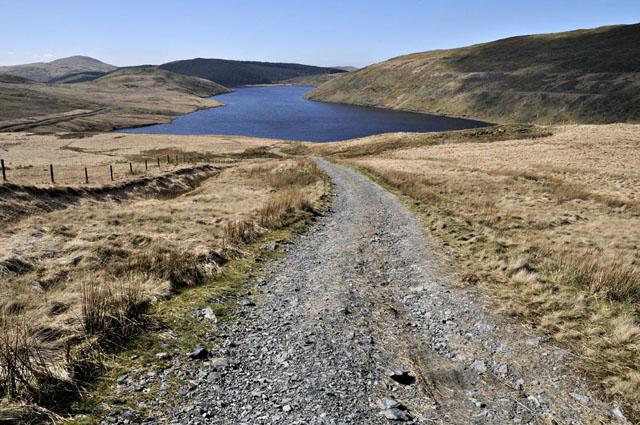
On the day in question - March 11th - high pressure was firmly in charge of conditions, so that distant views were hazy. Closer to hand, across the valley of Hengwm, the peaty stream coming down from Hyddgen slithers its dark way across flats of eroded glacial drift covered in peat-marsh and dense, clumpy molinia or moorgrass - ankle-twisting territory indeed!
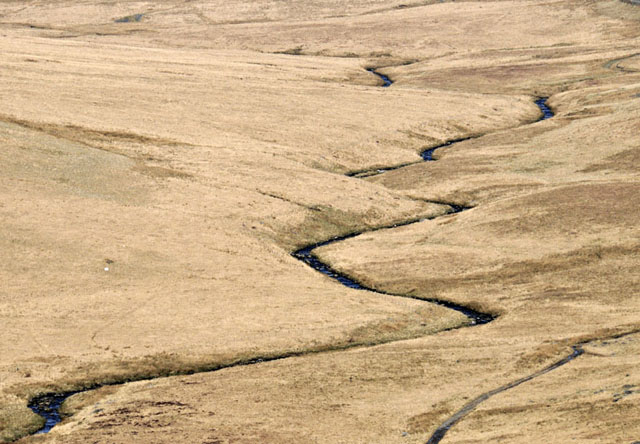
The track gradually climbs for a few kilometres before turning south up into the headwaters of Afon Rheidol and its source, Llyn Llygad. Not ideal light, at around midday, but a better chance would come later in the day....
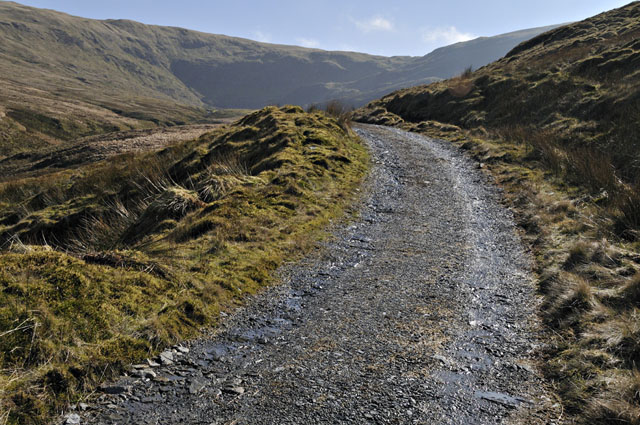
Llyn Llygad is always a quiet, lonely spot with its dark, brooding headwall beyond....

The climb now begins in earnest. The most direct route is to skirt round to the R and ascend the steep grassy slopes before the crags are reached.....

There is a semblance of a path in places and height is quickly gained....

Arriving on the shoulder of Plynlimon Fach, the final climb to the summit of Plynlimon Fawr now lies ahead....
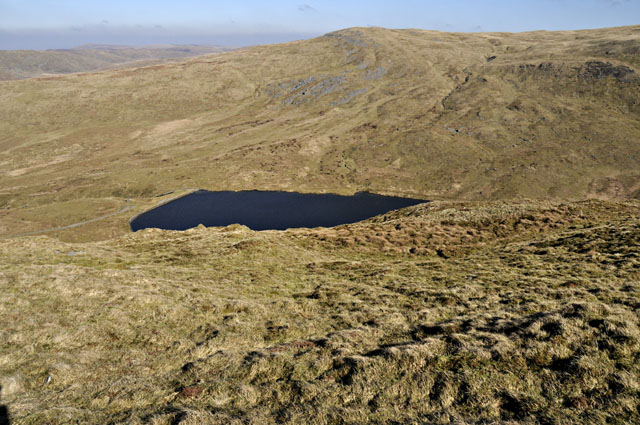
Here, frost-shattered rock lies underfoot and the views really start to open up (on a non-hazy day!)...
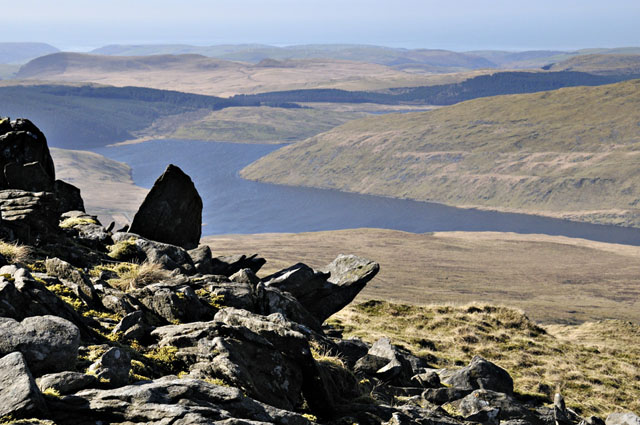
Soon, the summit trig-point comes into sight...
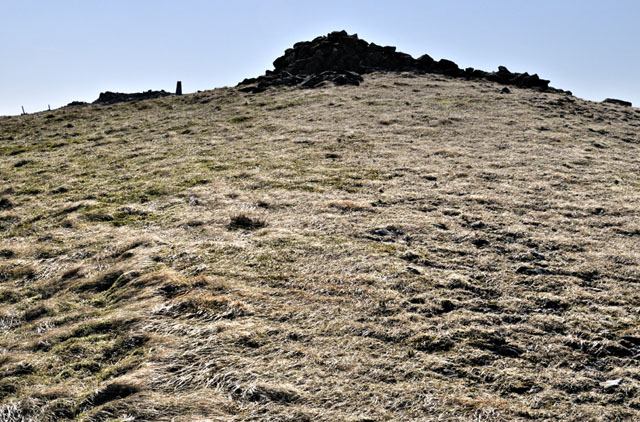
Last few paces...
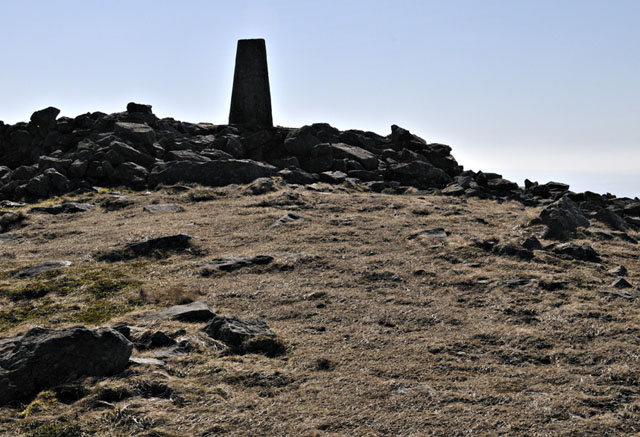
And a skyline of haze!

Because this is the highest point between Cadair Idris and the Brecon Beacons, on a clear day the view is simply vast....

I stopped for lunch in the stone-walled shelter, out of a chilly easterly wind. Departing half an hour later, the place was inspected by the local ravens in case I'd dropped any food - no such luck!
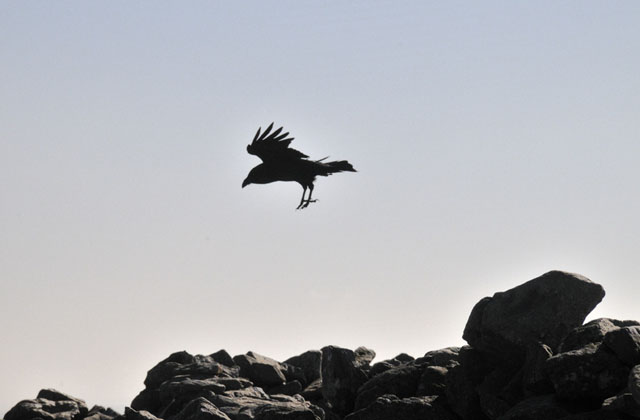
For the descent-route, I decided to traverse all of Plynlimon Fach and drop directly off its northern end to regain the track. This should offer some better photographic opportunities in the afternoon light with its lower-angle sun....
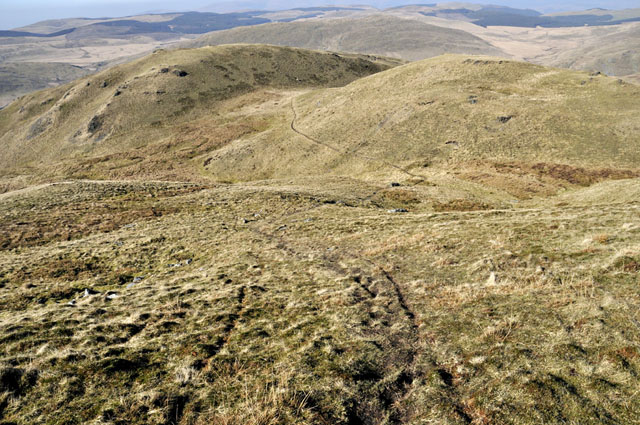
One fascinating aspect of Plynlimon is its Arctic-Alpine flora, which occurs in abundance above the 600 m contour. In places it dominates underfoot, and consists of sedges, dwarf bilberry and crowberry, mosses and clubmosses. This is the Alpine Clubmoss:
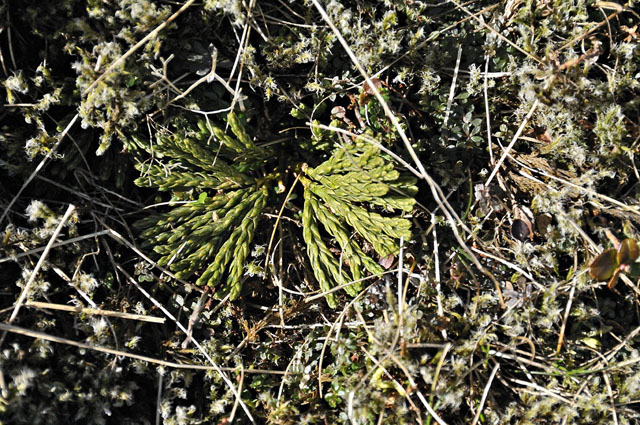
Here with a Fir Clubmoss:
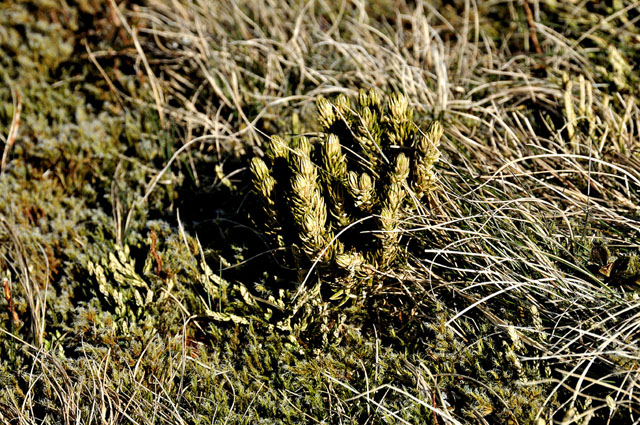
These primitive-looking plants form densely-branched masses in places where some shelter is present....
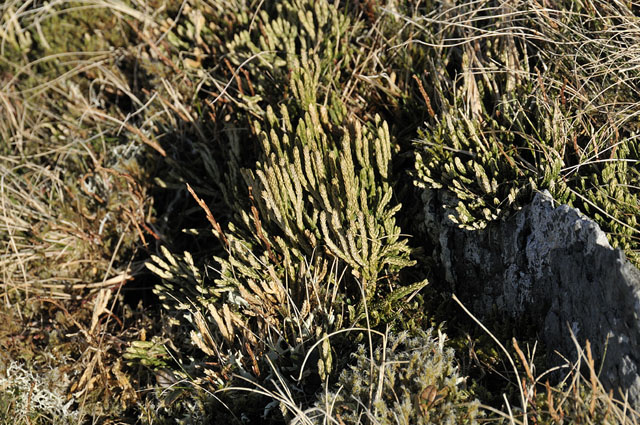
...whereas in exposure, more prostrate forms mat the ground together with mosses.
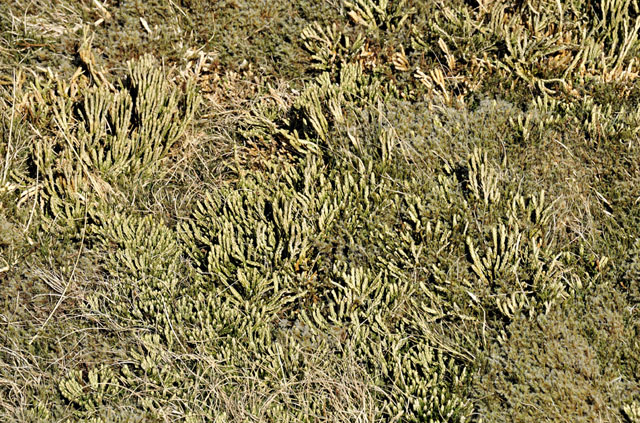
Hollows in the bedrock are filled with acidic dark water - pyrite (iron sulphide) occurring in the bedrock hereabouts tends to lead to low pH values in such places.
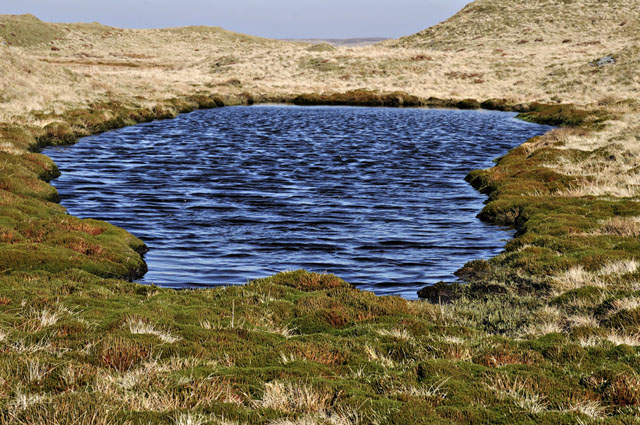
Here's a retrospective of the first part of the descent from Plynlimon Fawr:
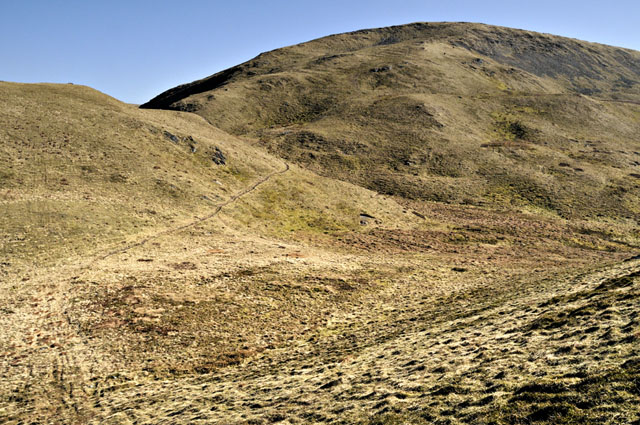
Looking back from the summit of Plynlimon Fach:

Later afternoon light starts to throw shadows down the hillside towards Llyn Llygad.....
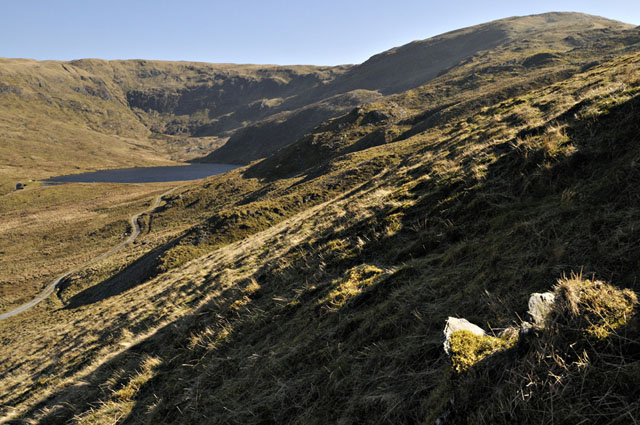
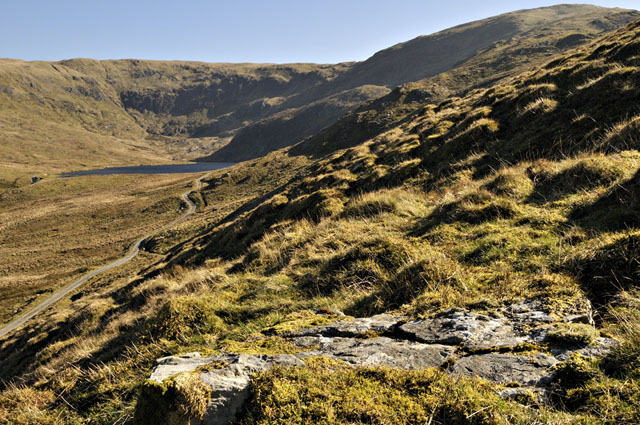
There followed the steady tramp back down the track, with a pause near Fainc Ddu. These small lakes contain an interesting community of acid-loving plants, including Bogbean...
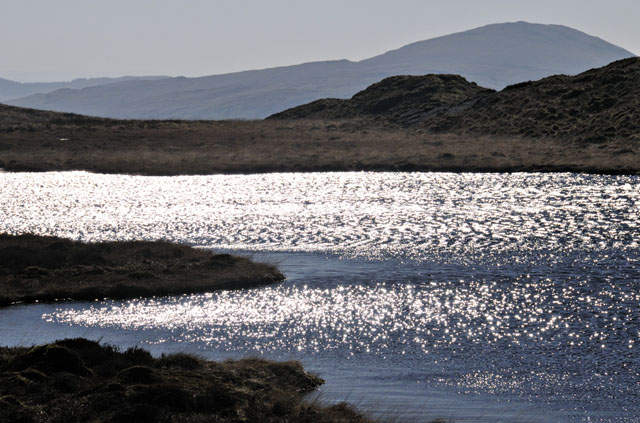
Disgwylfa Fawr is the hill in the background...

And so back down to the road and home, passing the Highland cattle that graze hereabouts.

Timewise, that round trip took me about 4 hours, but it could be extended to take in Y Garn at the SW end of the ridge. A direct descent of Y Garn's N flank is tough-going though - it is easier to return towards the main summit and make a descending traverse back towards Plynlimon Fach, in my experience!
March 22nd saw the threat of a few heavy showers and thunderstorms and in the afternoon, with a promising clump of convective activity showing up on the radar, I headed down to Borth for a look. I was greeted with a mature storm-cell complete with a shelf-cloud marking its gust-front:
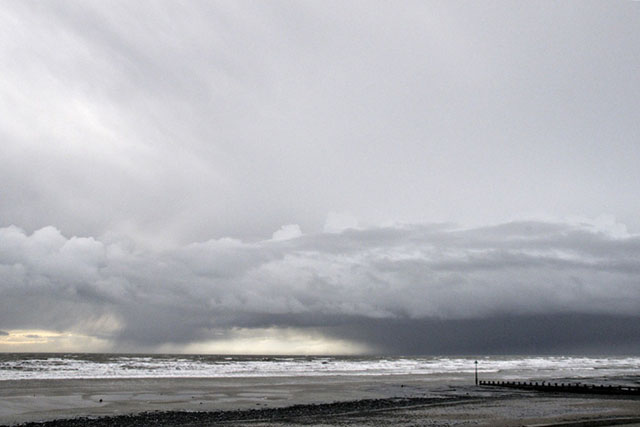
Some serious precipitation going on in there!
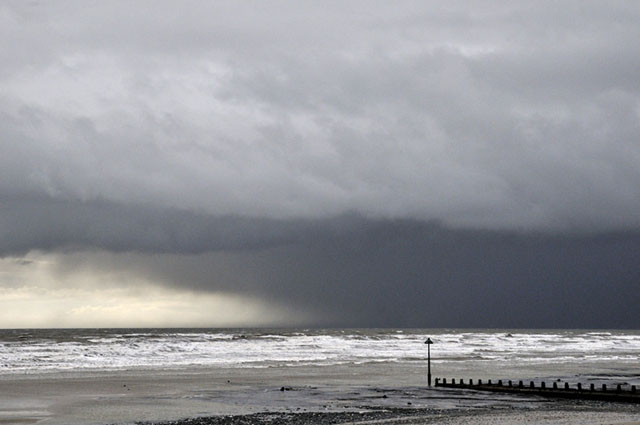
I headed round to Ynyslas sands as the gust-front trundled over the Dyfi Estuary:
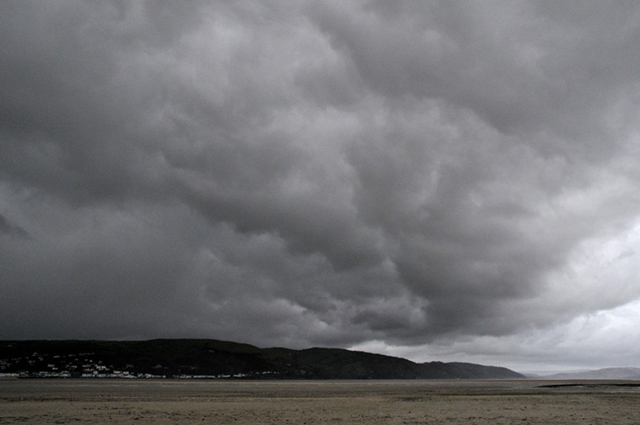
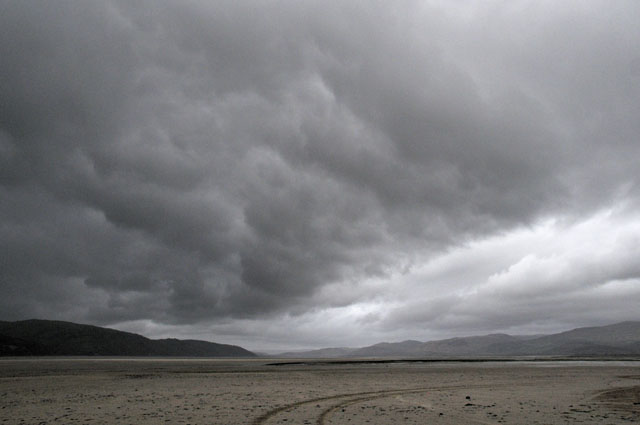
Quickly, the storm headed off up the Dyfi Valley, displaying crude mammatus on the underside of its anvil:
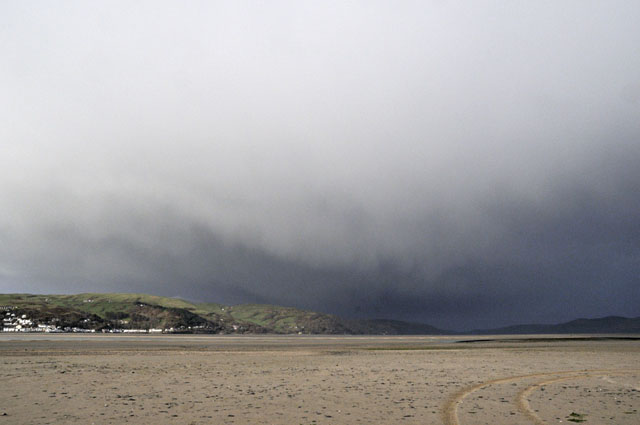
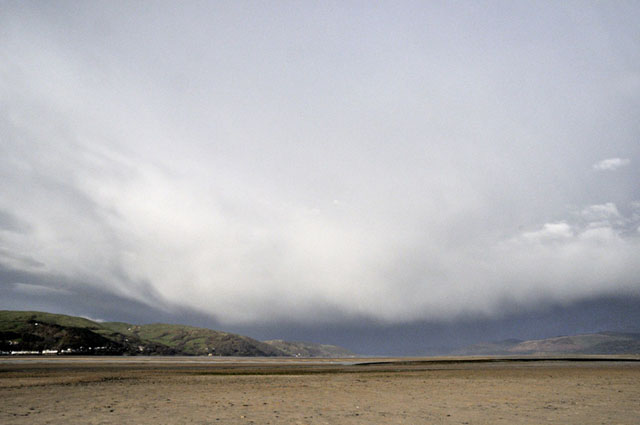
March 31st again saw conditions that favoured strong convective storms and on this instance I caught a corker - again at Borth. It was coming up from the south, having already caused some flooding in Aberystwyth. Quite frequent lightning accompanied it as it approached my vantage-point but the main feature again was a massive gust-front which was spreading out in all directions from its core....
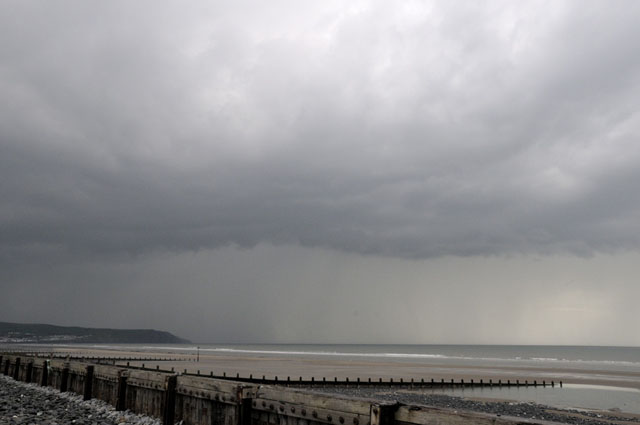
Here, its leading edge is almost overhead and the intensity of the rain and hail beyond is impressive:
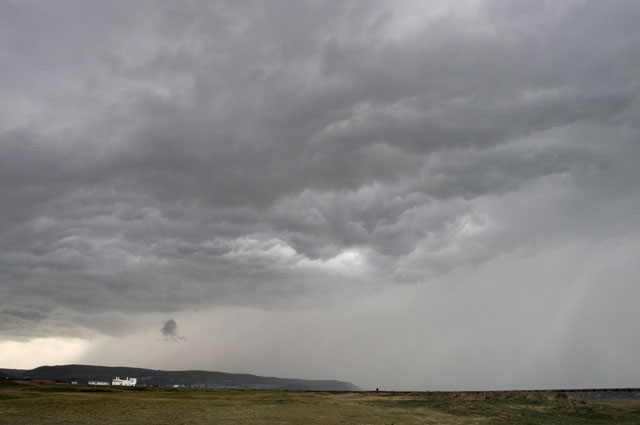
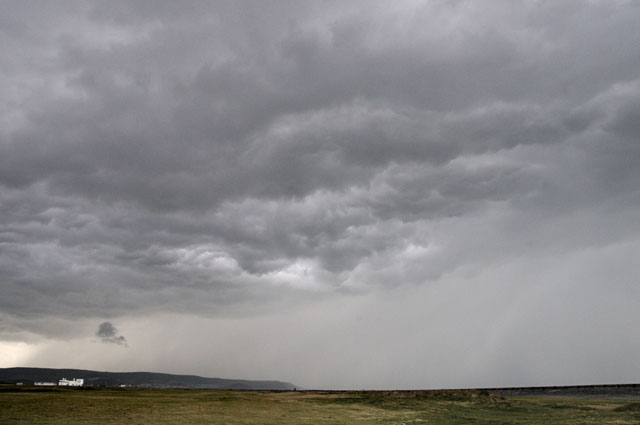
As the rain began to get too close, I jogged inland ahead of it, stopping for photos here and there: this was at Ynyslas Turn looking up into the inside of the gust-front. Some serious turbulence going on up there!
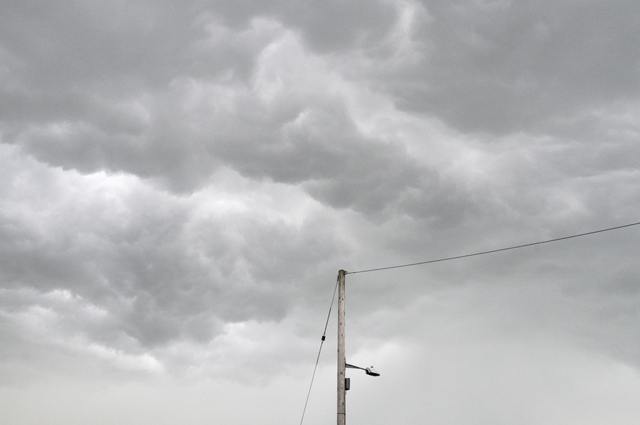
These two were taken by Aberleri Boatyard:

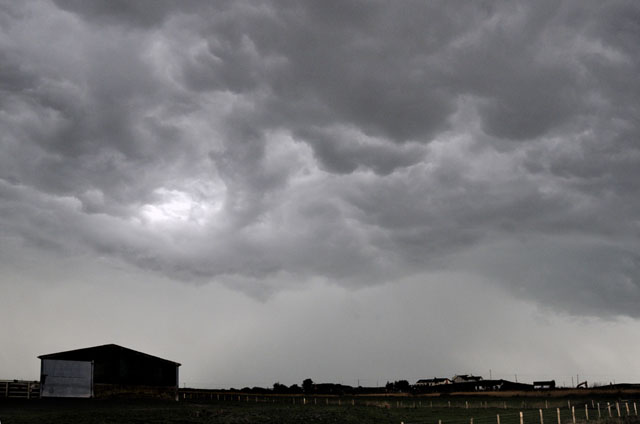
The front had sped up by then and with the rain arriving and lightning striking nearby, it was time to bail out. Driving back up the valley to Machynlleth, the gust-front was heading on out past town by the time I arrived and new thundery downpours were affecting the Tarennau.
Well by the time the next post is done I should be in Forge, enjoying the view out of my kitchen window! More soon.
BACK TO WEATHER-BLOG MENU
New! Fine Art Prints & digital images for sale-
Welsh Weather & Dyfi Valley landscapes Slide-Library - Click HERE